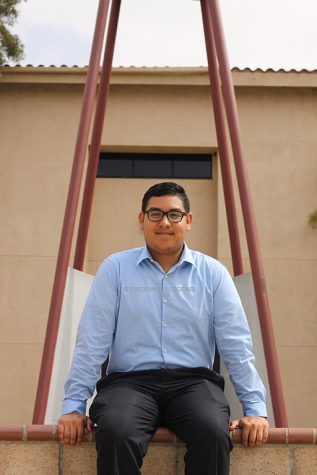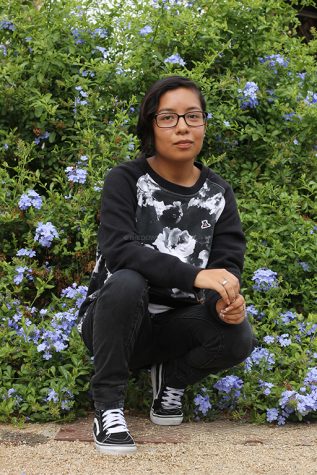The Conspiracy of Our English Classes
April 15, 2019
Flat earths, fake moon landings, and a new world orders are all concepts people believe or disbelieve. These ideas are commonly called conspiracy theories, an idea that a secret and often malicious organization/individuals are responsible for some action event. As the school year is ending, ERWC teachers have recently begun their next unit with conspiracy theories as their focus.
ERWC is an english class that has multiple sections throughout the school year meant to encourage critical thinking and writing. Previously in the school year, the ERWC classes have worked on “Racial Profiling”, Othello, and 1984 units. Shortly after the end of the 1984 unit, the Conspiracy Theory unit or Fake News unit was started with articles introducing students to the core of fake news(or “news” that isn’t factual and thus misleads its audience).
Valery Salas, 12, has always been interested in a variety of occult topics such as conspiracy theories and was ecstatic when she found out that she would be working on conspiracies for her ERWC class.
“I think that conspiracy theories are amazing, they make my brain move,” Salas said. “The teachers choose conspiracy theories because they knew it was not only going to be a fun project, but it would get a lot of kids thinking and more involved with their life outside of school, like more involved with politics.”
The unit began with students reading “Students Have ‘Dismaying’ Inability to Tell Fake News from Real, Study Finds” by Camila Domonoske. To accompany the article, ERWC classes continued to delve into the makings of fake news and the impact which fake news has had on real life events. The 2016 United States Election is a prime example the unit uses to depict the manipulation of fake news as fake news swelled misconceptions of the running candidates.
Senior Yaneli Delgado is excited to dig deep on some conspiracies for her project, and is more aware of the relation between fake news and conspiracies.
“They[conspiracy theories] are good… it is good to think outside the box, to speculate about things that may be possible,” Delgado said. “Well, I think that conspiracy theories are the biggest form of false news where a lot of people believe them even though it is all just speculation.”
Students have the freedom to choose any conspiracy topic and present their theory in any way they choose so long as they follow general guidelines. After about two weeks into the new unit, the final activity for “fake news” is a culminating presentation on a conspiracy theory. Groups of students will need to pick a conspiracy such as “Holocaust Revisionist,” “Freemasons,” “Flat Earther,” and “Illuminati” then evaluate its effect on society and its validity.
Mrs. Ordway, ERWC and Designing the American Dream teacher is happy with the student responses she has gotten from this fake news unit.
“Well, the unit is detecting fake news which goes along with conspiracy theories,” Mrs. Ordway said. “I think that it is really important for everybody in the world to be able to figure out what is real and what is fake and sometimes conspiracy theories are fun but they can go too far and it can lead to dangerous things. The unit itself teaches students some tips on how to apply, figuring out what is real and what is fake… and conspiracy theories are a fun way to do that.”
Although this unit’s main focus is detecting and avoiding fake news, the ERWC teachers were able to convert what was going to be an essay about fake news into an interesting presentation on various conspiracy theories. If the unit ends with a successful display of strategies the ERWC department wanted students to inherit from this fake news topic, then having presentations instead of a culminating paper may become a reliable alternative for future ERWC classes.





